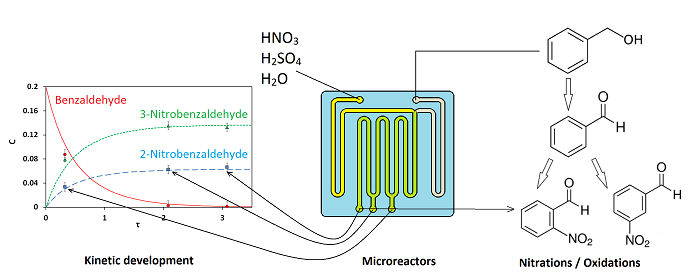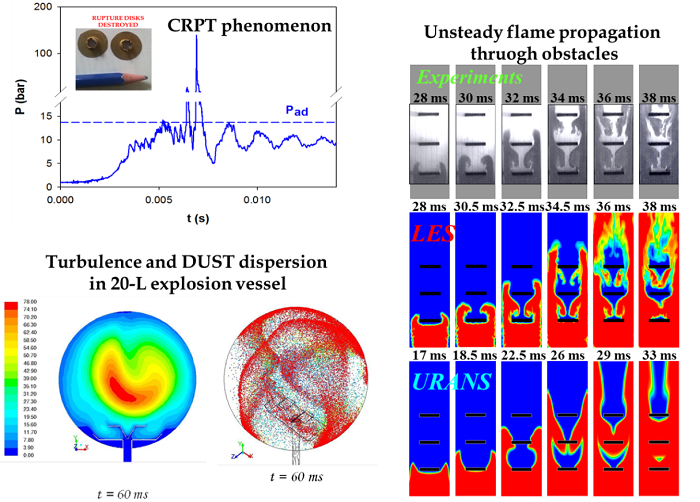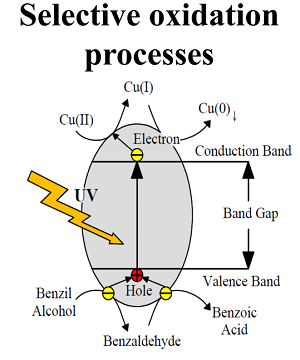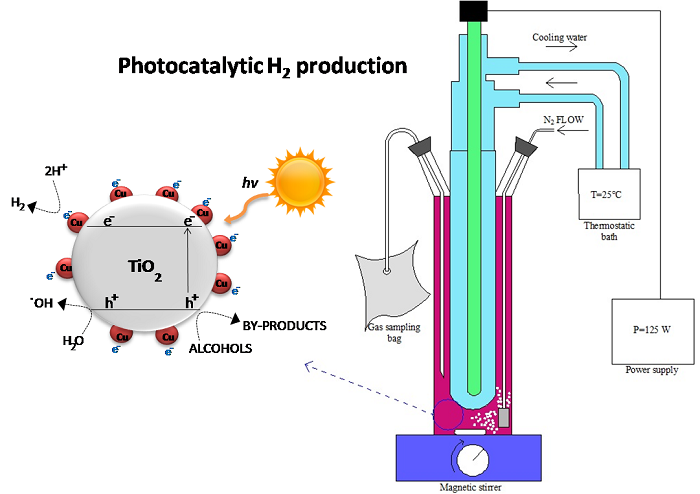Industrial Catalysis
The research activity carried out in this field is mainly devoted to a thermokinetic characterization of chemical systems which may be of interest of chemical industry to prevent the occurrence of runaway phenomena and thermal explosion. This activity is performed by coupling some calorimetric (as adiabatic, isoperibolic and/or scanning) and analytical techniques (HPLC-MS, GC-MS and spectrophotometry UV-vis). A relevant part of this activity has been dedicated to the search for safe alternative nitrating systems and to the thermal stability of peroxides and hydroperoxides of industrial interest. More recently the researches have been extended to the development of new microreactor technologies for the safe production of nitrates as high value intermediates for chemical applications.

Study of accidental explosions and fires through both numerical (CFD) and experimental (explosion and flammability tests) approaches is also carried out. In this field, the main research areas are:
- Gas explosions under extreme conditions of temperature, pressure and reactant concentration;
- Unsteady flame propagation: CFD simulations;
- Explosions of dust/air, dust-gas/air and liquid systems: experimental tests and CFD simulations.

Environmental Protection and renewable energy systems
The research activity is devoted to evaluate the environmental persistence of xenobiotics and to their removal from water and solid matrices through the application of advanced oxidation processes.The research group coordinated by Prof. Andreozzi gained a long experience in the application of processes such as O3/UV, O3/H2O2, H2O2/UV, PhotoFenton e Photocatalysis to the treatment of water, wastewater and solid matrices. Particular attention has been devoted to the energy recovery during the treatment of wastewaters containing organic species by means of photocatalytic processes. During the last years the activity has been mainly dedicated to:
- Hydrogen production through solar photocatalytic reforming of organics and development of suitable kinetic models;
- Development of new low-cost photocatalytic materials with high efficiency for hydrogen generation;
- High-value chemicals production through photo-oxidation processes in aqueous solution;
- Study of the environmental persistence of selected xenobiotics;
- Application of some AOP techniques to the removal of drugs from sewage treatment plant effluents and natural water, of chlorinated substances from contaminated ground water and to the treatment olive oil mill wastewater and of organic species from solid matrices;
- Applications of some innovative microreactors for the estimation of kinetic parameters for photoxidation of selected pollutants.


Equipment
- Thermostated batch reactors and photoreactor
- DSC and Phitec calorimeters
- High pressure liquid chromatographs
- Gas cromathograph
- Spectrophotometer
- Total organic carbon analyzer
- Ozonator
- Multi-processor services and pc clusters for parallel computations
- High pressure reactors (400 bar @ 650 K)
- 20L sphere
- Goldbert-Greenwald furnace
- Hartman Tube
- Pensky–Martens closed-cup flash-point tester
Partecipants
- Roberto Andreozzi (Full Professor - DICMaPI)
- Raffaele Marotta (Associate Professor - DICMaPI)
- Almerinda Di Benedetto (Associate Professor - DICMaPI)